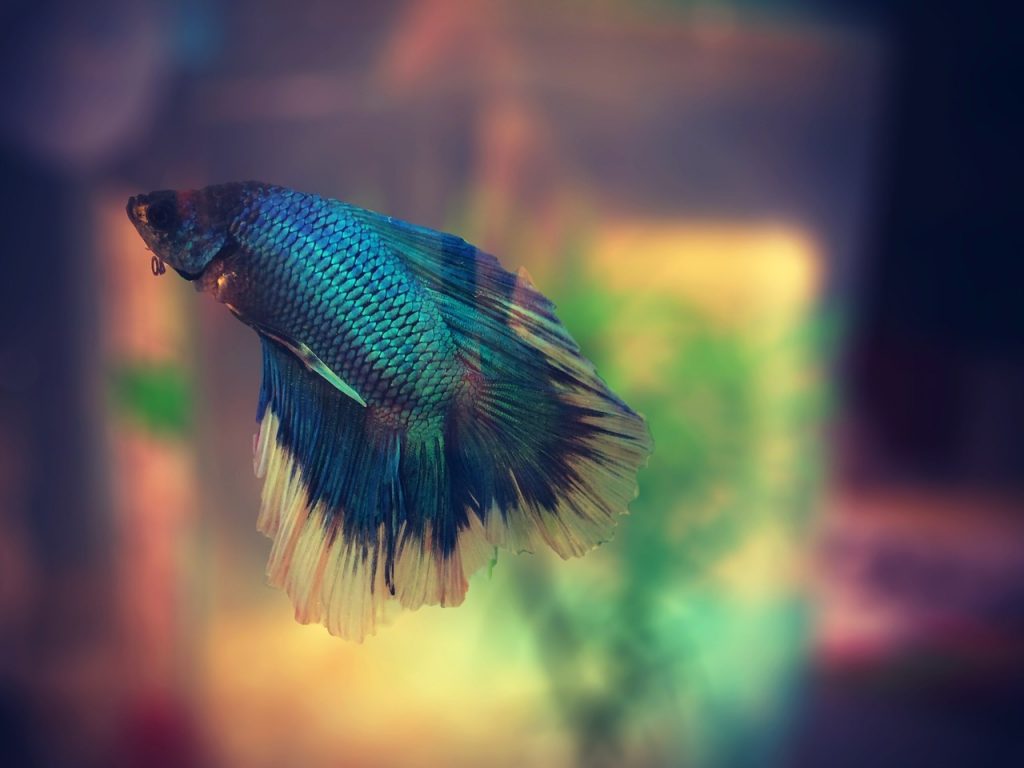
Table of Contents
Background
Siamese Fighting Fish or Betta Splendens, commonly known as Betta Fish, originate from the rice paddies, muddy ponds, and wild streams of Southeast Asia, mostly from Thailand. Traditional bettas were not so colorful and bright, and typically had short fins and longer bodies. Due to their breeding in the modern day, they now have long flowing fins and beautiful bright colors, mostly seen in the males of the species. Follow along with this betta fish care guide to learn everything you need to know to keep your little friend happy and healthy.
The bettas we know and find in stores these days come in a variety of beautiful colors and color arrangements along with longer elegant fins. The females have longer bodies and possess shorter fins and are typically not as bight colored. However through natural genetic mutation in the males, they have also gained the beautiful colors we admire today. Females are mostly easier to handle because they are less combative while males are aggressive.
These cute but hostile creatures are called siamese fighting fish due to their reputation for being combative and aggressive. The level of aggressiveness depends on the character of the individual specimen, but it is clear that seemingly fine and sweet bettas will sometimes fight and kill each other.
Siamese fighting fish or betta splendens will instinctively do a battle to the death, which is just part of their nature, so it is imperative that their owner understands this characteristic and handles it accordingly. This Betta Fish Care Guide will help you to understand in depth how to care for handle these little fighters efficiently.
Bettas Natural Habitat
As previously mentioned, shallow streams and rice paddies of Thailand are a natural heaven for the betta fish. They like areas where the water is very clean, slow moving, and warm. They are also found in the warm waters of Vietnam, Malaysia, Indonesia, and in some parts of China. Those water bodies are typically large and shallow which are found in both rainforests and wetlands.
While you might buy them in a small jar or bag, they should not be kept in it for too long. They need plenty of space to be able to live happy, healthy, and very importantly stress free! A 2.5 gallon fish tank or fish aquarium is the minimum size we recommend for one male, but of course a bigger tank or aquarium is better.

Proper Betta Fish care
Bettas are not hard to care for once you get accustomed to their normal routine. Betta fish care is a simple job, but before taking on the task of caring a one, it’s a great idea to understand and learn a little about their character traits. You will also learn about what an ideal space is like for them and other basic information that will help you gain the knowledge needed to provide the best quality care for your new little friend. The betta fish care instructions below will help you to enjoy your fish for a long time, and with the right care, can be several years of blissful enjoyment.
Setting Up the Ideal Betta Tank
While some betta owners might be lead to believe these vibrant little creatures can survive in small bowls because of the shallow waters of their natural habitat, this is truly not the case and they need ample space to swim if you want yours to survive. A crucial fact is that they not only require ample space, but they will also require warm water.
Maintaining a temperature between 78 and 82 degrees Fahrenheit (25 to 28 degrees Celsius) is important. We recommend trying to keep the tank at a constant 80 degrees Fahrenheit (26.5 degrees Celsius) which gives you some buffer room on either side should anything happen. If the fish tank temperature drops below 75 degrees, they will quickly become confused, discouraged, sluggish and potentially sick. The water used in the aquarium should have a pH that is close to neutral, which is 7.0, or slightly acidic, around 6.5. You also want to ensure they tank water is treated for nitrates, chlorine, ammonia, and chloramines. We recommend using a water conditioner for this as it will address everything except the ph level.
Size of the Betta Tank
The majority of people purchase male bettas as they are the most common in pet stores. A male specimen does best when he’s the only one in the aquarium, although we do recommend adding some crustaceans to help keep the tank clean. Females can be added to a males tank if you plan to breed, but should not be kept in the same tank longer then needed. The male will attack any other male and female if not breeding.
Female bettas can be kept together with an appropriate sized aquarium. You can have up to five or six female bettas, known as a sorority, together and they will live in relative peace in a community aquarium. The main issue of violence and fighting will happen whenever two or more male bettas are placed together.
All that being said, even though you will only have one male betta in a tank you still need to provide it ample space. We recommend a minimum of a 2.5 gallon fish tank. If you need help deciding which 2.5 gallon fish tank would work best for you, you can find our reviews in our best betta fish tanks guide. Even though we recommend 2.5 gallons, that is only the minimum size needed. We would actually recommend going bigger if you have the space, as it will allow your betta all the freedom they need as well as allow you to get some snails, shrimp, or Cory Catfish, which will all help to keep the tank clean. If you are looking for a bigger tank, some options to consider would be 3 gallons, 5 gallons, or even 10 gallons.
The aquarium should also be filled no more than around 90 percent full because they can leap out of the water in some circumstances, sometimes as high as two or three inches above the surface. If you have a lid this will definitely help but make sure that your fish won’t harm itself by hitting the tank lid. Many fish tanks come with covers, which we recommend using, which will help to prevent the little water adventurers from jumping out. Do make sure the water is above the filter or pump as you do not want to let it run dry.
Betta Heater
As previously mentioned, these species need to be kept firmly at a warm temperature of 80 degrees F (26.5 degrees C). This is crucial as they can be prone to get sick if left in cold water too long and can get Finrot or Ich. These diseases are mostly prevented by keeping the aquarium temperature level and steady. We recommend using an adjustable water heater instead of one that is only set to a one temperature.
Fish Tank Filter
There are many types of filters on the market but only some of them are good for bettas. They cannot have a strong current finding a filter for betta fish with a pump and an adjustable flow is the best solution. You can also put a filter cartridge on the end of the intake or outflow valve. It’s not uncommon for some bettas to enjoy a small flow of water from the tank or pump. Keep in mind the majority of fish tanks come with filters and external pumps if needed, but that does not necessarily mean it’s good. If you have a tank that did not come with a filter or are looking for a better one, we recommend the Aqueon QuietFlow Internal Filters which offer multiple sizes to match your aquarium size. Read more about this in our best betta fish tank guide.
Bettas have a labyrinth organ which allows them to take oxygen from above the surface of the water. Having a good filter to keep the water clean and scum free is very important. If scum, dirt or anything else ends up on the surface of the water and the fish is prevented from swimming to a clean spot they will not be able to breathe properly and could die.
Betta Tank Accessories
All bettas enjoy hiding, even though they spend the majority of their time in the top half of the fish aquarium. Having areas and spots to help them feel safe and stress free. While adding gravel to the bottom of the tank is aesthetically pleasing, bettas don’t specifically need it. You can also have pebbles or stones if you prefer. If you decide to add any crustaceans then you will need gravel or sand if you want to them to survive. You can also customize the decorations to suite your style as well as add plants.
When looking for plants to add, we always recommend choosing live plants but understand that isn’t always possible. If you need to have fake plants, you need to ensure they are manufactured specifically for use with these species since some plastic plants will harm the betta’s pretty yet sensitive fins.
A lot of owners provide a tall plant (preferably real or made for bettas) or a betta leaf hammock, which we highly recommend, for your betta to rest on and sleep on during the night. The closer to the surface the better so they won’t have to swim far to surface to breathe. You can also get sinking logs which your betta will love to hide in.
They do not necessarily need an air pump because they have a special respiratory organ called labyrinth that allows them to get oxygen from the air instead of the water. This is why you will see your betta go to the top and “butt” the surface and gulp some air. Since they have the labyrinth organ they can be kept in a tank or aquarium without a dedicated air supply. If you do decide to use an air pump with diffusion stone, they can still benefit in other ways as will any other creatures in the community.
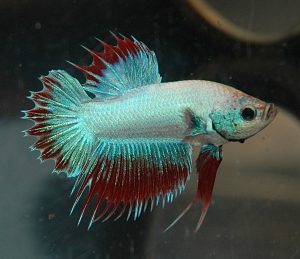
How to Introduce a Betta to the Aquarium
When you purchase your betta it will come in a tied off bag of water. You should first acclimate the fish to the tank before you put them in it. A procedure called floating alleviates this problem. Once the water is set up and correctly conditioned in the aquarium, set the fish (while still in the store’s bag) on top of it. If you bring the betta home in a cup or container, transfer the fish and water to some form of a plastic bag or ziplock that can be securely closed.
Floating the bag on top of the surface of the water will bring both water temperatures into equilibrium at 80 degrees F (26.5 degrees C) which will acclimate your betta to the temperature and considerably reduce his or her fear and stress. The bag must be left to float for around an hour. Then, you can add small amounts of the aquarium water to the bag. Let it float for another 30 minutes and then use a fish net to add your cute little betta into his new habitat. Make sure not to add any of the bagged water back into the fish aquarium as you do not know how the water was treated at the pet store.
How to Clean an Aquarium
Do not use any kind of soap to clean any part of the aquarium or its accessories as even small amounts of can poison them and be deadly. They really like swimming in very clean water. Cleaning should be fairly easy. Each week remove 10% – 20% of the water and replace it with new treated water. Every three to four weeks you should use a gravel vacuum to clean the gravel or whichever substrate you have. If you have any crustaceans you might be able to push this off to 4+ weeks due to them cleaning a lot of the gravel. Just pay careful attention and make sure you don’t let it get too dirty in there.
For the most part you won’t necessarily need to clean the inside walls if you do regular water changes and have a good filter, but if you do need to, we recommend a magnetic cleaner. Please also make sure than when you do remove water you turn off the filter or pump as you do not want to let it run dry.
Feeding Your Betta
How often should I feed my betta fish? This is a very important topic because overfeeding of bettas is not good especially in aquariums that are too small or have no filter. This is an essential part of betta fish care. A daily diet that meets their specific needs is key. The stomach of the betta is similar to the size of its eyeball, so make sure not to overfeed it. If you do, the extra food will just make aquarium and water dirty meaning more work for you or could constipate them. Bettas can be picky eaters, but in our best betta fish food guide we cover a number of different options that you can try.
They are prone to some constipation and bloating. To help avoid or fix it, cook a frozen pea and de-shell once cooled, then feed the pea around once a week or as needed to treat the constipation and bloating. Follow the pea feeding with a day of fasting, until their digestive tract clears. Remove any bigger uneaten portion after a couple minutes to help keep the aquarium water clean. You can read more about this below.
Betta food
how often do you feed betta fish and what do betta fish eat? To find out more about how often to feed betta fish, how much to feed them, or which is the right betta food for you, you can read our complete guide on the best betta fish food.
There are a variety of types of betta fish food including; pellets, flakes, crisps, dried bloodworms as well as store bought frozen fish food. The key to feeding a betta is giving them a nutrient and vitamin rich daily diet that will help keep them healthy, bring out their vibrant and natural colors, and let them be stress free. Baby bettas need a smaller type of pellet or nicely crushed flakes when eating. As an alternative, bettas like to eat fresh or frozen brine shrimp, also bloodworms and daphnia (fresh or freeze-dried). Bettas do enjoy live food and, in some cases, very picky bettas will only accept live food. However, too much live food can lead to obesity so watch your little friend for excessive weight gain.
Betta constipation
Spoiling your Betta fish with too much food can lead to constipation issues. Since this can be a big issue, we have given it it’s own topic. If you continue to feed them pellets or whichever food you choose, while they might seem like they are still hungry, they really don’t need to extra food. Stick to the feeding amount on the packaging and feed less when they are younger.
Feed them with as much as they will eat in a few minutes, according to the packaging recommendations of the food you choose, and then don’t feed them again until their next feeding time. We recommend feeding 3 times a day if you can. Bettas can make themselves very sick and there are some bettas that may die due to constipation.
You can treat this with frozen peas. Defrost one frozen pea, microwave it for a few seconds to cook it, and remove the skin. Cut it into smaller pieces, close to the size of half his little eye, and feed it to him or her. Wait 24 hours and don’t feed them anything else. After the 24 hours, try feed them their regular meal and if they eat it normally continue feeding them during their regular times. If they try to eat and spit it out or don’t eat at all, wait until the next feeding and try again. If they still don’t eat, you can try feeding another piece of pea or wait a few more hours, repeat, and then try another piece of pea. You might see a fairly large white or grey floating poop in the tank after the 24 hours. This should be cleaned out and is a good sign. If you don’t see anything, it might have sunk and you shouldn’t worry about it, as long as you betta continues to eat normally. This should help with the constipation and any bloating.
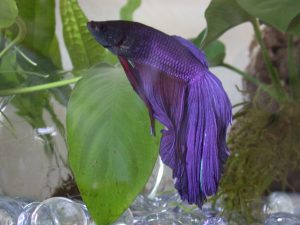
Betta Health
Signs of a healthy betta is activity, alertness, and regular normal eating. Vibrant colors, especially among males, is a good sign of health and happiness. It is important to avoid overcrowded tanks, which can be a cause of violence and disease. Maintaining clear water, regularly cleaning the gravel, and checking and cleaning the filter and good housekeeping activities to help keep your little friend healthy. You might also see your little betta making a bubble nest, which can be a sign of good healthy and a happy and stress free little friend.
How to tell if your betta fish is sick? A red flag and indication of major problems sign is a visible loss of color or normal appetite. Unusual spots or fungus and parasites on a body are obviously indications of an issue. Cloudy eyes, elevated scales, fins that are unnaturally frayed, listlessness, labored respirations and erratic swimming are all problematic signs and should be taken seriously. Finally, bloating and weight loss can be also possible.
Common Betta Health Issues
Fin and Tail Rot is one of the most common issues. Frayed and disintegrating fins and tails, and their reddened underbelly are indicators of this problem. Improve water quality immediately and consult your veterinarian for antibiotics to treat the disease.
Fish Fungus is the second most common problem. White cottony growth and or discoloration of the eyes is usually present. This is contagious for any other fish you have in the aquarium, so you should put them in quarantine. Use a fish anti-fungal antibiotic as a remedy to the situation and make sure to clean the tank well.
Bacterial infections can also happen and some of them can be deadly if they are not treated quick enough. Cloudy eyes, open sores and skin reddening are sign of this disease. Clean the tank water as quickly as possible and use an antibacterial medication.
Ich, also known as Ick or White Spot, is the another common health problem. White spots will appear on their body and fins, and your betta will start rubbing against hard objects or will swims erratically. If you see this you should quarantine that fish immediately, clean the fish tank thoroughly and seek medication.
Betta love
Bettas are sensitive creatures. They have a very emotional and close relationship with their human owners, maybe because they do not bond well with other species of fish. Each betta is a different and unique individual and will have his own character and temperament. You will find them watching you close and will sometimes follow you or your hands. They like to be a part of your daily life and you should definitely interact with them. Usually your betta will get very excited and swim to you when you walk into the room or get close to the tank. They can become depressed if they are left alone and get no love for long periods of time. Your betta will also be a lot happier in a tank that contains plenty of space where the can swim around freely. As suggested previously, we recommend a minimum of 2.5 gallons.
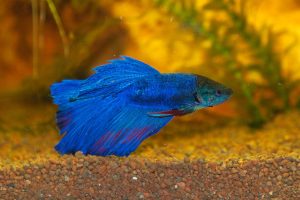
Betta Companionship
Bettas can be kept with other species, however, remember that males are extremely territorial and aggressive toward any kind of fish that might resemble another male betta, especially if they are similar size, shape, and colors.
Species to avoid having as tank mates include characteristics similar to themselves like large amounts of blue or red coloring, those with long flowing fins like Angelfish, High-Fin Tetras, Guppies and Sailfin Mollies. Also those with similar shapes like Gourami, Dwarf Gourami, and female bettas unless you are breeding. Also as previously mentioned, don’t put two male bettas together as they will more than likely kill each other.
Another type of companion that you can add to your betta fish tank are crustaceans. Apple snails, mystery snails, ghost shrimp, and some frog species are all usually good options. You can add one or more of these depending on the size of your tank. We recommend 2 to 4 ghost shrimp and 1 to 2 snails. They will give your betta companionship, will be fun for you to watch, and clean your tank!
Conclusion
We hope that this long and extensive guide covers everything you need to help you take care of your betta fish. While more information could be written about some topics, specifically diseases, we will leave that for a article to be added at a later date. With all the knowledge you just gained, you should be an expert betta handler now! We hope you enjoyed and please leave any questions or comments below.
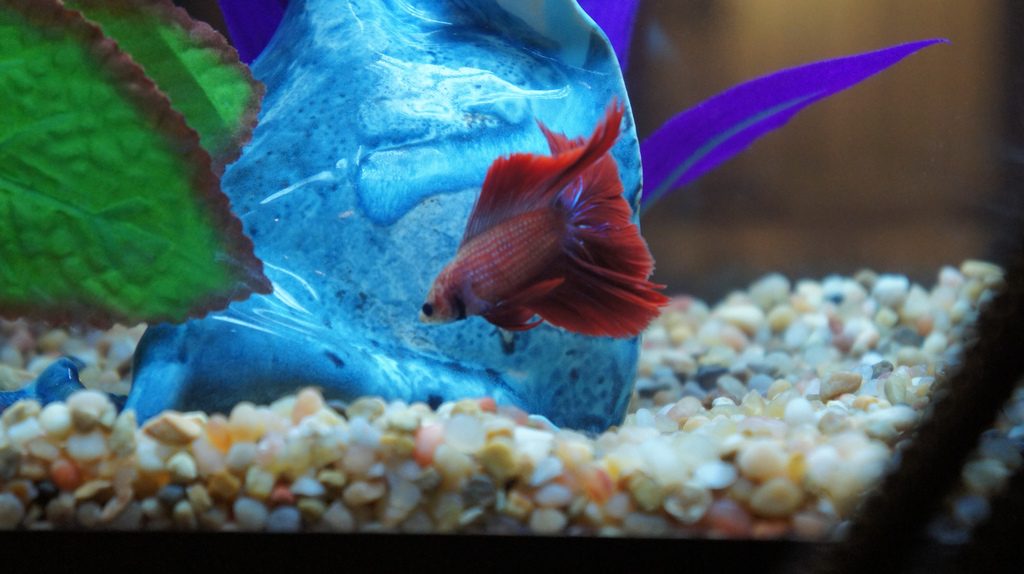
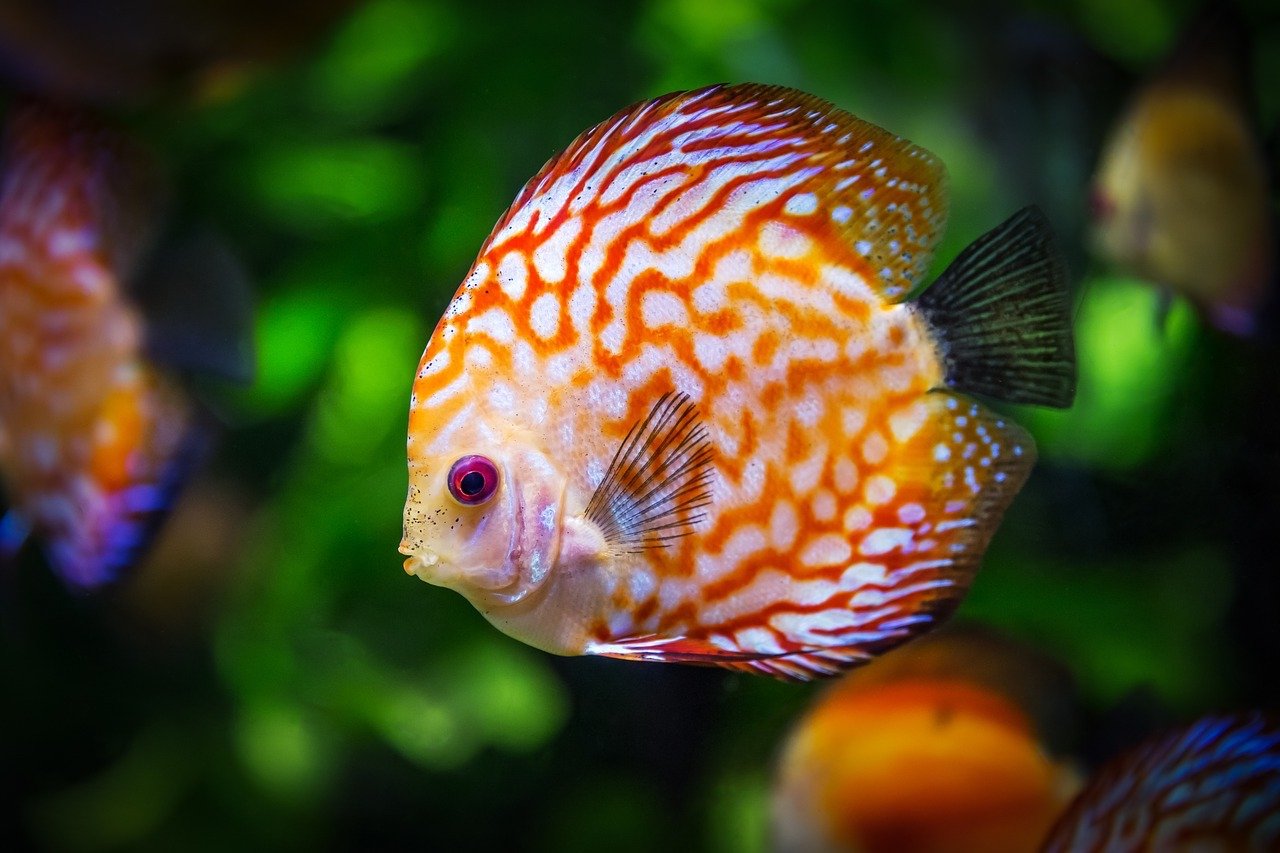


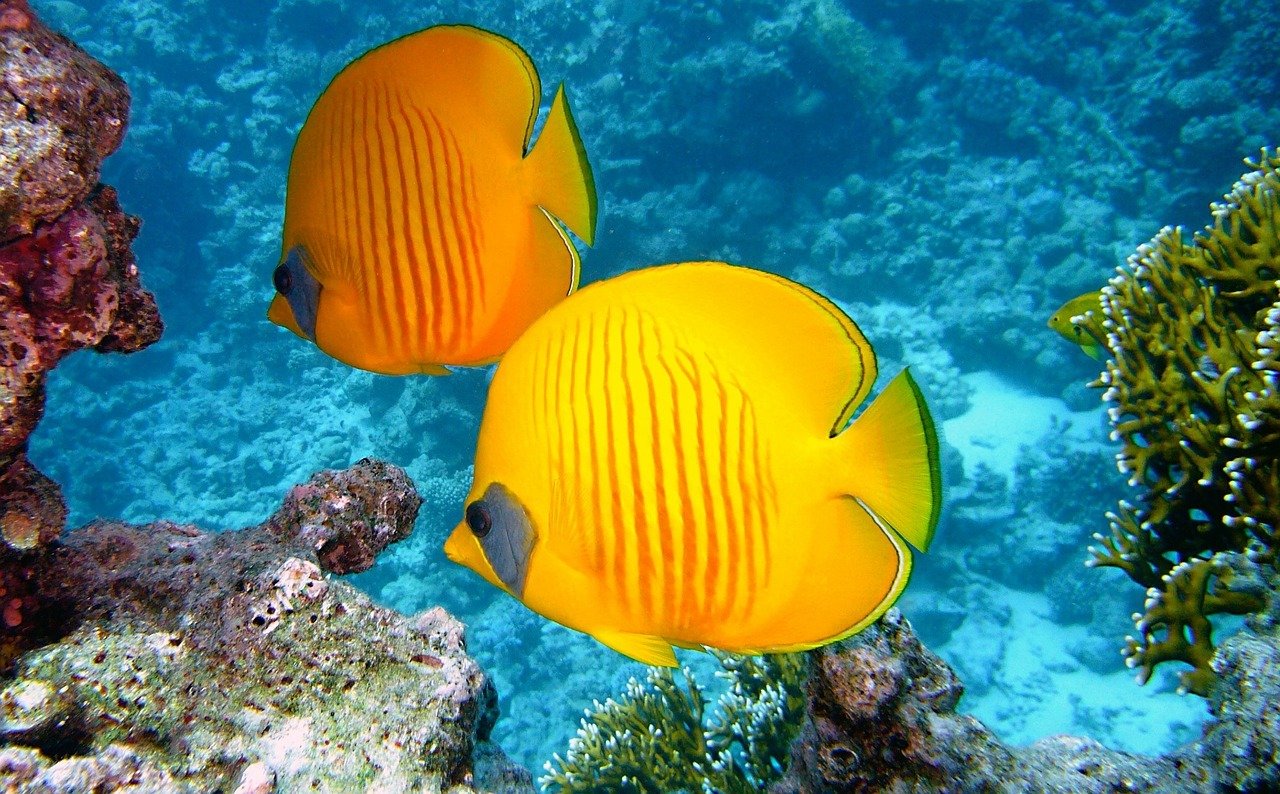
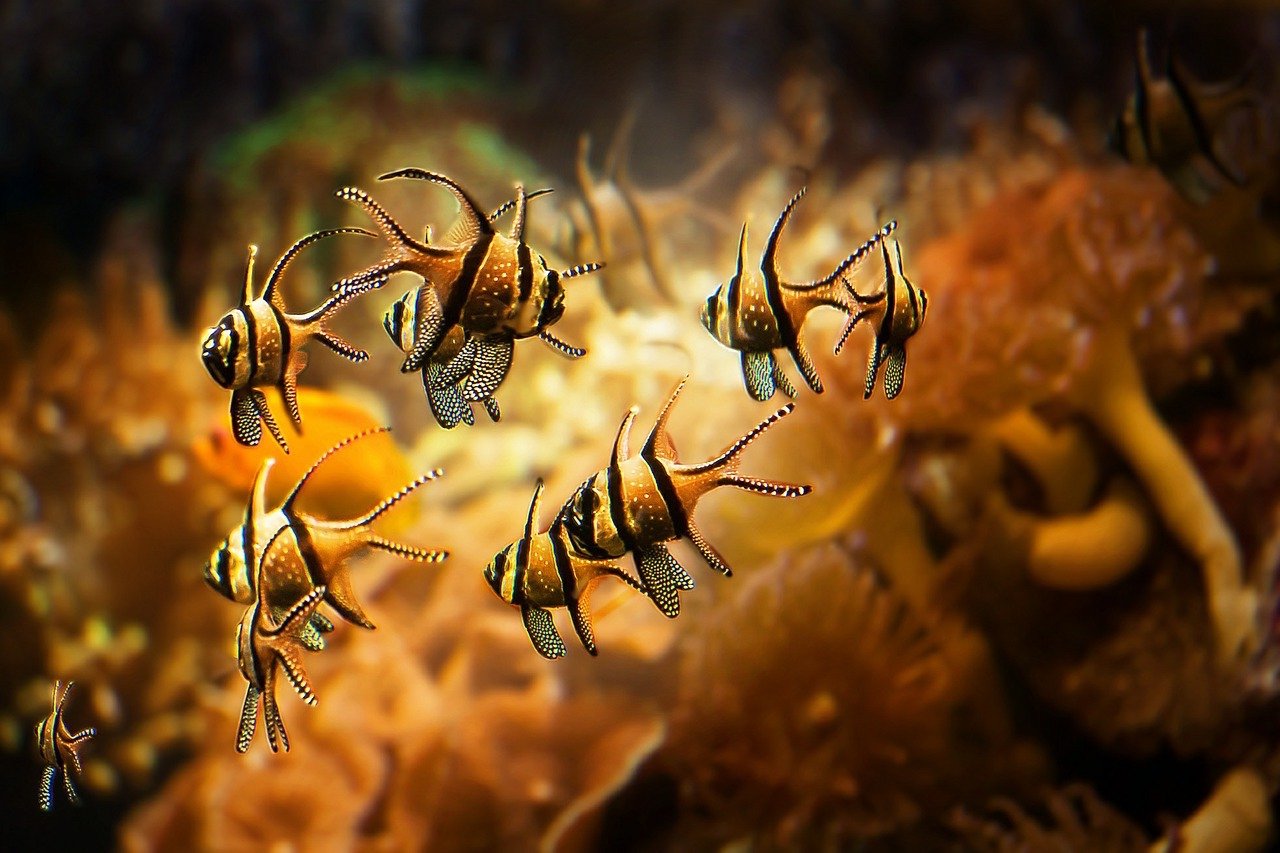
Chris louis says
This is so helpful article. never seen such step by step guideline to setup a beta tank . thanks for your sharing